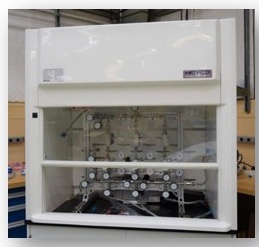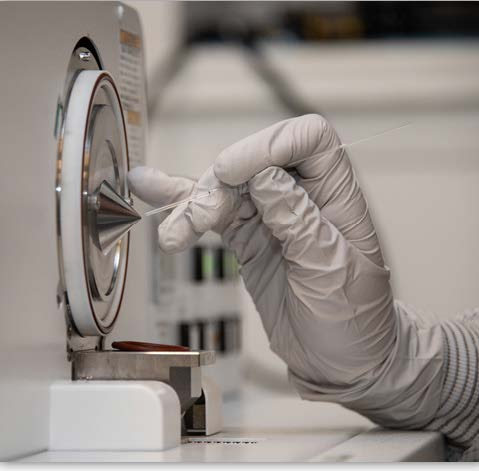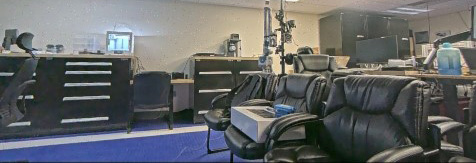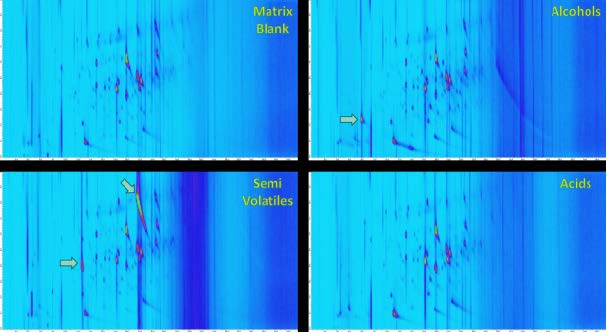SRNL Support to NA-22 in FY23
Savannah River National Laboratory
Programs To Advance Nuclear Nonproliferation via Research and Development
The Savannah River National Laboratory (SRNL) plays a critical role devel-oping cutting-edge nuclear detection technologies to identify and deter illicit transfer of weapons-usable nuclear materials and to prevent the unauthorized spread of sensitive nuclear weapons technology.
- Maintains nonproliferation competencies within the national laboratory complex.
- Supports multi-laboratory field experiments to improve quantification of nuclear weapons materials.
- Focuses on nuclear fuel signatures via hot cell dissolution and monitoring of irradiated nuclear fuel in the Mk-18A program.
- Conducts research and development to improve detection and characterization of hydrogen sources. The production and handling of hydrogen isotopes are key activities for advanced nuclear nonproliferation programs.
- Supports multi-laboratory experimental and modeling efforts to investigate particulate formation during detonation events to determine potential methods for discriminating signatures of high explosive hydrodynamic tests from conventional munitions.
Key Accomplishments and Associated Impacts
New Hires
In FY23, SRNL hired eight staff members to support both current and future NA-22 missions.
Hydrogen Production Project
Launched Phase One of a new, multi-laboratory NA-22 Venture Project to characterize tritium production and processing in countries of interest. The Venture will utilize the Savannah River Tritium Enterprise (SRTE) to characterize and quantify tritium source terms and production based on a variety of remotely detected data and information.
HE Test Signatures of Advanced Designs.
SRNL continues to develop new signatures related to soot produced by explosives. Scientists and engineers tested their ability to measure the interaction of soot and deuterated salt during the Salty Dog Campaign held at Sandia National Laboratory. The multi-lab exercise allowed SRNL to collect samples, like cables, silicon wafers, and cuboids, and provide them to Los Alamos National Laboratory (LANL) for analysis. Along with Lawrence Livermore National Laboratory (LLNL), scientific processes to differentiate the use of hydrodynamic and conventional munitions continue to improve.
Multi-Indicator Conversion Assessment Venture
The SRNL-led Multi-Indicator Conversion Assessment Venture developed a framework to quantify uranium hexafluoride (UF6) production based on multi-physics and multi-modal approaches. Baseline measurement collections were also conducted at a facility of interest to characterize background concentrations of several chemical constituents. Future collection efforts will be performed to characterize facility operations and to provide data needed to quantify production.

Thermal image of the Honeywell Metropolis Uranium conversion facility during restart activities.
Coordinated Signature Investigation Project
SRNL designed and installed advanced equipment and instrumentation to support the Coordinated Signature Investigations (CSI) Venture. In addition, SRNL performed advanced atmospheric transport modeling and sample analyses to better understand the complex transport of important chemical and nuclear species to receptors downwind of a small-scale nuclear production facility. The overall objective of CSI is to develop sampling capabilities, physics-based modeling, and methods required to quantify the amount of material produced by these facilities.

Gas manifold cabinet created at SRNL was shipped to INL and installed.
Matrix Assisted Ionization Vacuum Mass Spectrometry Project
A new technique to conduct mass spectrometric analysis without a conventional ionization source is under development at SRNL. SRNL staff identified three Matrix Assisted Ionization (MAI) chemicals that facilitate the rapid measurement of uranium species without consumables normally required by a mass spectrometer. The research was presented to International Atomic Energy Agency (IAEA), which expressed further interest in the study.

Matrix Assisted Ionization Vacuum Mass Spectrometry Project.
Intentional Forensics Venture
In FY23, SRNL developed a method to synthesize isotopically barcoded titanium to support the Intentional Forensics Venture for NA-22. By using a dynamic range of isotopic barcodes, investigators can accurately identify nuclear materials that are outside of regulatory control. Additionally, SRNL developed Taggant Forensics (TagFor) software to model taggant compositions, fuel and reactor types, irradiation conditions, and measurement scenarios. These models will help design the isotopic taggant materials.

Photograph of titanium feedstock dissolution during the synthesis of isotopically-barcoded Ti taggants.
Forecasting Changes in State-Level Nuclear Energy Programs w/Open-Source Indicators Project
The SRNL partnership with Virginia Tech’s Sanghani Center for Artificial Intelligence (AI) and Data Analytics continues to develop a new modeling tool that deploys AI to identify potential nuclear events or proliferation activities. The AI-driven model finds key words and phrases from open source or sensitive data to identify potentially unknown/undeclared nuclear programs or facilities to inform U.S. Government policy and decisionmakers.
Verification System for Live Camera Images Project
Already in its second year of development, a new treaty monitoring system is one step closer to deployment, thanks to SRNL scientists and engineers. The system, intended to remotely monitor nuclear weapons and sensitive nuclear materials of foreign countries, uses advanced imagery and LIDAR techniques to ensure that materials under treaty control are not removed and deployed.

Frame from security camera with algorithmically-generated noise for image verification.

Additional frame with greatly increased noise levels for visibility. Noise is typically kept at an imperceptible level so as to not decrease image quality while still increasing security.
ALGE Contaminant Transport Model for Emergency Response Project
SRNL modified the ALGE 3-D hydrodynamic model to track radiological materials discharged into a U.S. waterway either accidentally or intentionally to support emergency responders. Such materials pose a significant risk to public health since these waterways provide drinking water to cities and municipalities. In FY23, several experiments were conducted by SRNL’s University of South Carolina partner to provide validation data for the model. In addition, SRNL developed a Windows-based interface to provide rapid model results for emergency response.

ALGE Contaminant Transport Model for Emergency Response Project
Organic Bound Hydrogen Project
A scientific journal published the findings by SRNL researchers who are developing a chronometer to track tritium contamination sources and build an emissions timeline. “Environmental Science: Processes and Impacts” published the work in August 2022, which details how the rings inside of trees can be used to date anthropogenic tritium releases into the environment.
Radiolytic Degradation Project
SRNL is conducting experiments to determine the organic gases released from the reprocessing of nuclear fuel to extract Plutonium (Pu). These experiments will lead to the development of robust, at-distance systems capable of detecting these gases downwind of a Pu production facility. Such detection capabilities are critical to the U.S. ability to determine quantities of Pu produced by these facilities in countries of interest.

Total ion chromatogram view for headspace samples showing the matrix blank (top-left), the sample containing alcohols (top-right), the sample containing semi-volatiles (bottom-left), and the sample containing acids (bottom right). Arrows depict the location of an analyte of interest in the 2D contour plot.